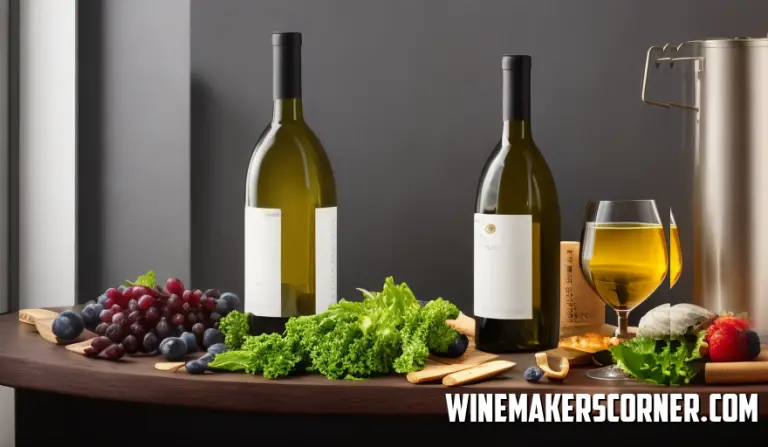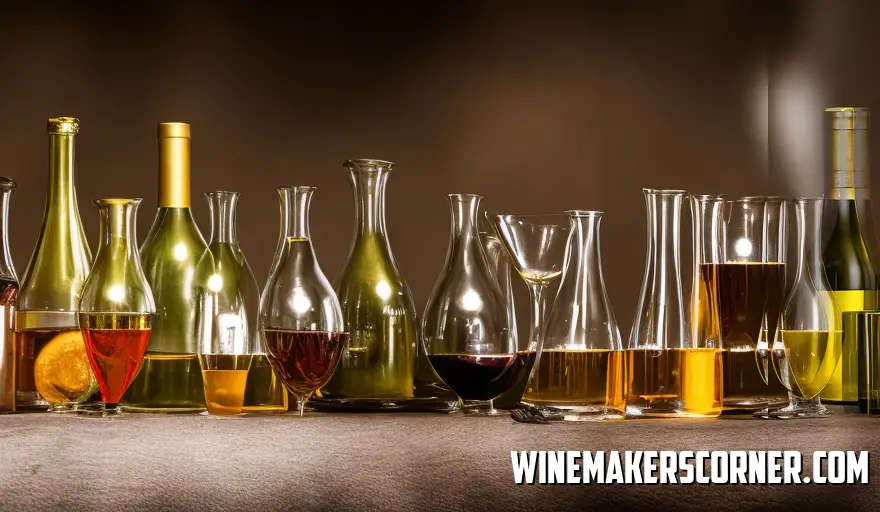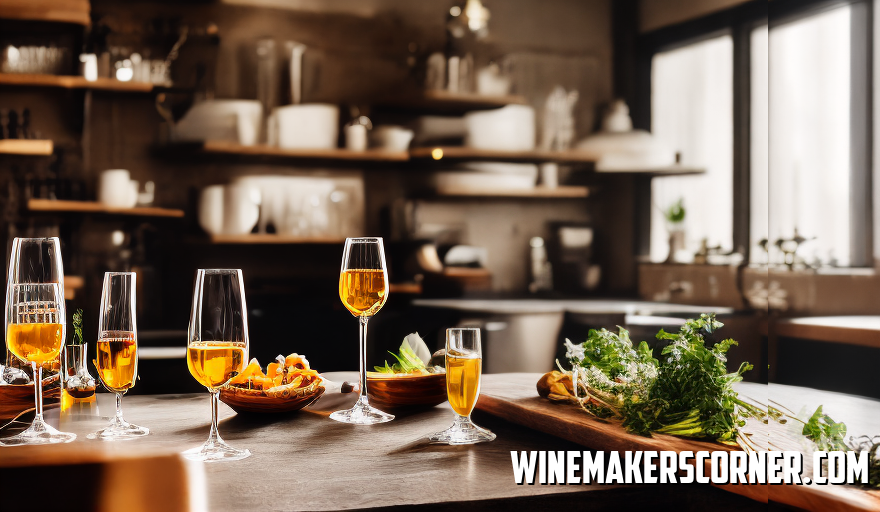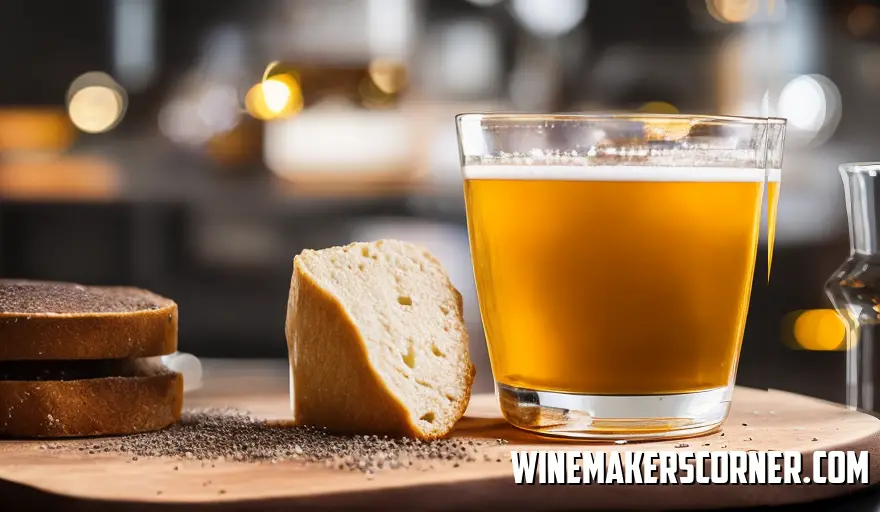Ah yes, the joys of sipping on a fine glass of wine – it hardly gets any better than that! But alas, a dangerous threat looms over us as we indulge: oxidation. Fear not, though, fellow oenophiles!
We’re here to bestow upon you all the wisdom and secrets required to defeat this unwelcome intruder and safeguard your beloved beverage from deterioration.
Are you ready for an enlightening expedition into preventing wine oxidation? You better be – because each sip merits pristine perfection!
Table of Contents
Understanding Wine Oxidation and Its Effects
For enthusiasts who enjoy drinking wine, oxidation can be a friend or foe, depending on how extreme it gets. In one aspect, it enhances aging by contributing depth and complexity, while on the other hand, excessive oxidation spoils freshness making for an unpleasant experience overall. Acquiring full knowledge about and controlling the effects of oxidation is vital to successfully mastering its prevention techniques while consuming any variety of wine. Oxidation occurs when oxygen reacts chemically with compounds existing within the beverage leading to changes reflected in flavor, aroma, and color. With moderation, these changes taste good, but when left uncontrolled, they end up degrading quality rapidly; one significant example includes brownish tones appearing within white wines as oxygen interacts with phenolic compounds resulting in its original vibrancy fading out significantly. On top of that, oxidized red wines tend to look more like brick structures than deep shades. Aromas also change as fruit or floral notes turn into nutty or cooked fruit hints – not desirable for every kind of wine style at all! Furthermore, oxidized wines tend to lose brightness,
and their acidity levels become muted.
Appropriate storage is vital to maintain the freshness of your wine while preventing unwanted oxidation effects! Keep bottles away from direct sunlight and heat sources as they accelerate the process. Maintaining consistent temperature conditions – ideally between 55°F 60°F for most wines is also essential. When serving or decanting your favorite bottle, be mindful of exposed surface areas using appropriate glassware or pouring techniques that reduce splashing.
By doing this, you can minimize contact with air and preserve your wine’s freshness. Once opened, reseal bottles tightly with vacuum pumps or specialized stoppers designed to maintain their freshness. Embrace the power of antioxidants like sulfur dioxide (SO2) to inhibit oxidative reactions within your bottle of vino naturally! Some winemakers even add small amounts of SO2 during the winemaking process to ensure their creation remains pristine from vineyard to glass.
In conclusion, understanding and managing wine oxidation is crucial in preserving its vibrancy and freshness. By employing these tips and tricks, you can become a true expert in preventing wine oxidation and ensure that your favorite bottles remain enjoyable for extended periods!
Proper Wine Storage Techniques
Artfully storing wine requires attention to detail and precision – but with these tips, you’ll be well toward perfect preservation! First up: temperature. Aim for a steady storage temperature of about 55°F (13°C); drastic changes will cause unnecessary expansion/contraction, leading to harmful air flow into your bottles. Humidity levels play an important role too! Relative humidity in the range of 60 to 70% keeps corks from drying out and cracking – retaining optimal freshness even if stored long-term.
Lastly, remember positioning: storing bottles horizontally helps maintain moisture balance around the cork so no harmful air enters. Remember these simple tips, and your vino will stay perfect year after year! Have you ever wondered why some wines age better than others? The secret to an ideal wine is proper storage! Keeping the cork swollen is essential so oxygen doesn’t sneak into your bottle and affect its taste.
But did you know that light can also damage your wine over time? UV rays, in particular, can speed up oxidation processes, ruining the flavor. Store your bottles in dimly lit areas or install tinted glass doors for added protection to avoid this issue. Finally, vibration can be just as problematic as light exposure.
Too much of it can disturb older wines creating unpleasant sediment and unwanted chemical reactions within the bottle. So choose a stable location away from appliances like washing machines or dishwashers for good measure.
In conclusion: protecting your wine collection from oxidation and maintaining freshness across every sip is all about proper storage techniques! Remember these tips: stable temperatures around 55°F (13°C), humidity levels between 60-70 % horizontal bottle storage, minimal light exposure, and no excessive vibrations. By adhering to these guidelines, you’ll always guarantee yourself years of the perfect glass of wine! The evidence shows that human actions, including burning fossil fuels and deforestation, are responsible for warmer global temperatures. This situation poses various environmental problems, such as rising sea levels from melting ice caps or increased frequency/severity of extreme weather events like heat waves or hurricanes.
We must act immediately with individual efforts on living sustainably alongside encouraging companies around corporate social responsibility so they, too, reduce pollution emissions which contribute heavily towards climate change.
This is crucial that we invest in cutting-edge technologies to keep up with the challenges our world faces.
Every person must do their bit to preserve the planet for future generations – we all must work together towards this goal.
Choosing the Right Wine Bottle Closures
A proper bottle closure is essential to ensure your wine maintains its quality and aroma. The kind of seal you select can determine whether your preferred drink ages gracefully or spoils quickly due to oxidization.
Let’s explore some options available in the market and their respective benefits.
Cork remains a popular choice among winemakers because its sourced from renewable cork oak tree bark. Traditionalists prefer this option as it originates naturally; however, there are limitations to consider since cork taint can ruin an otherwise perfect bottle by leaving it with a musty odor and taste. Synthetic corks made from plastic materials provide another option worth considering. These corks mimic natural ones in both feel and appearance while eliminating any concerns about cork taints.
However, critics argue that they don’t offer the best seal for extended aging periods despite being relatively easy to open. Screw caps have become increasingly popular because they provide a practical solution to prevent oxidization. They form the perfect barrier against oxygen ingress, keeping your wine fresh for more extended periods than other closures might allow.
Screw caps may not be everyone’s cup of tea when it comes to appearance; nevertheless, they prove themselves through results. Glass stoppers are an excellent choice because they combine form with function- comprising non-reactive elements which leave your wine untainted while maintaining their purity over time. Despite being pricier compared to other options, glass stoppers bring elegance to any bottle without fail.
The bottom line is choosing an ideal closure depends on various factors such as personal preference, cost, and intended storage length; weighing them appropriately can help you enjoy fresh-tasting wine at all times.
Importance of Temperature and Humidity Control
It’s no secret that preserving the quality of your beloved wine collection over time requires some attention to detail – especially regarding temperature and humidity control! These two factors are crucial for preventing oxidation and maintaining freshness, so mastering them should be a top priority. Temperature fluctuations can seriously impact your wine aging process, so keeping it within an ideal range between 50 59°F (10 15°C) is essential. Too much warmth accelerates aging prematurely; too much coldness hinders proper development.
Additionally, increased heat levels elevate the risk of oxidation – a problem that can significantly impact the quality of your bottles. So investing in a good quality wine cooler or cellar could be a wise move for any serious collector. Or store bottles in a cool dark closet or basement with minimal temperature changes – but avoid direct sunlight or other heat sources. What about humidity?
A level between 60 and 70% will help prevent cork shrinkage and oxidation triggered by unwanted oxygen intrusion – a natural enemy to freshness! If regions are too dry around the cork, they may contract and allow air inside; too damp encourages mold growth on corks and labels – something you’ll want to avoid at all costs! Accurately monitor the moisture levels in your wine storage space with a hygrometer for optimum balance. Employing a humidifier or dehumidifier will allow for any necessary adjustments. Comprehending how pivotal controlling temperature and humidity are for inhibiting wine oxidation elevates your knowledge base significantly.
Please keep these guidelines fresh on your mind while indulging in each glass, reveling in the assurance that it remains untainted from its original state thanks to proper preservation methods used by the winemaker.
Using Wine Preservation Gadgets
Wine preservation gadgets are a lifesaver for anyone who enjoys a good glass of their favorite bottle. These devices are designed to keep your opened wine fresh and fully flavored–regardless of how long it has been open. But with a vast range of options available today, knowing which one is right for you can be challenging. Here’s is our review of three popular gadgets:
Vacuum pumps are an excellent choice- they’re also easy to use and affordable.
By creating a vacuum seal inside an open bottle, these tools remove air and slow down oxidation considerably – extending your chosen wines’ shelf life by several days. Inert gas systems eliminate all traces of oxygen oxidation by substituting it with an inert gas such as argon. Although they can be pricey compared to vacuum pumps, the investment pays off in maintaining high quality over time & tasting great! Looking for something innovative? Look no further than Coravin technology – this revolutionary gadget lets you pour your favorite bottle without popping its cork! Using a thin needle penetrating through the pin while argon gas preserves what remains- now that keeping like never before! If you have an extensive collection of wine or love tasting different ones at once, investing in a wine preservation gadget may seem costly.
However, it’s worth it if it means maintaining the quality of your beloved bottles! Silicone stoppers are one type of gadget that is both simple and effective. They create an airtight seal around the bottle opening to prevent any excess air from damaging its contents. These stoppers work well for short-term storage and for those on a tighter budget.
When selecting the perfect preservation device for your needs, consider what you hope to achieve with it. Are there specific types of wines you want to sample over time? Or do you need something that can keep opened bottles fresher and longer?
Remember that each device has its strengths and weaknesses.
No matter which gadget you choose, remember that none can preserve wine indefinitely after being opened. These tools help extend its longevity while maintaining quality as best they can.
Isn’t it worth investing in these nifty tools? Your taste buds will indeed thank you!
Quick Fixes for Opened Bottles
Navigating what to do with an opened bottle of wine can be tricky. But fear not, fellow wine lovers! There are a few quick fixes available to help keep your vino fresh.
First up is vacuum sealers. These handy gadgets extract air creating a vacuum inside the bottle that stops oxidation and preserves freshness for days. It’s easy to use, too – simply place the sealer on top and pump away. Another option is inert gas sprays, which displace oxygen in the bottle with harmless gases like argon or nitrogen.
Just give it a quick squirt before re-corking your bottle, and rest assured that your wine will remain fresh. Wine lovers worldwide also swear by transferring unfinished wine into a smaller container with minimal airspace; less exposure to oxygen equals fresher wine – who knew? And lastly, there’s the fridge trick – surprise! Storing an open bottle of white wine in the fridge keeps it fresh for longer and even brings a slight chilliness to reds without compromising taste, so don’t be afraid to pop it in there if all else fails. If you want to extend the life of an open bottle of wine, put it in the fridge! This method is highly effective at slowing down oxidation and preserving the taste for extended periods.
Plus, if you find yourself with some remaining vino past its prime for drinking straight up – no worries! Plenty of creative options are available to transform it into something new and delicious – like a delectable sangria or cozy mulled wine concoction. By tapping into these clever tricks, you can enjoy fine wines without sacrificing quality due to premature spoilage from oxidation.
Knowing When to Consume or Dispose of Oxidized Wine
As any wine lover knows, figuring out what to do with an oxidized bottle can be challenging. Recognizing the signs and implications of this issue is critical for making informed decisions about when it’s time either consume or dispose of your drink. Let’s start by identifying exactly what makes a wine appear oxidized – for white varieties, look out for coloring that seems dull or brownish alongside aromas resembling vinegar or cooked fruit.
Now that we know what tells us oxidation has occurred (trust those senses!), let’s talk about the next steps – with a catch: severity matters here! Sometimes even mildly oxidized wines can still give you enjoyment – incredibly bold reds loaded with tannins and complex flavors. If your bottle fits this description, but its slightly worn quality doesn’t bother you too much, then there’s no harm in drinking it up. Just don’t wait too long before doing so. When you detect strong vinegar smells or unpleasant tastes in your vino, it’s time to move on from that bottle.
Drinking heavily oxidized wines not only compromises the flavor but can cause headaches or stomach problems as well. Prevention is key here – ensure proper storage with cool temperatures and minimal light exposure and consider investing in preservation tools like vacuum pumps or inert gas systems.
Knowing when it’s time to drink up versus toss out oxidized wine is critical for any true oenophile committed to thwarting oxidation at every turn. Keep an eye out for early warning signs and act accordingly while using preventive measures to extend the longevity of your wine collection.




